KTM Two-Stroke Fuel Injection Info
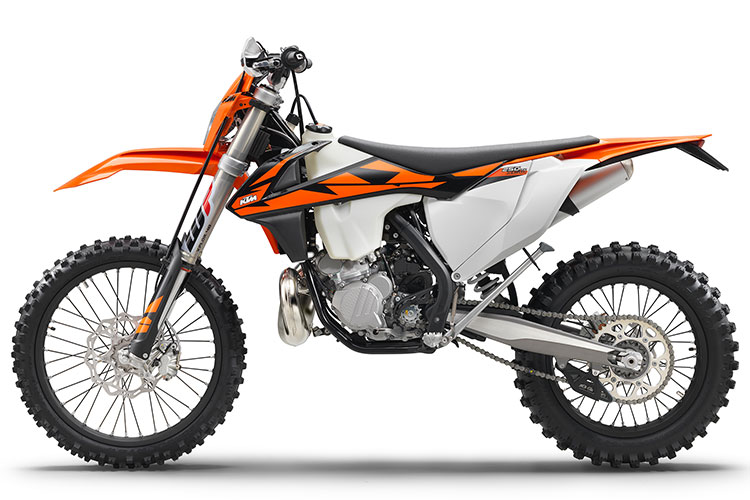
Click Here for the Riding Impression
While we were out picking up and dropping off test bikes, KTM’s worldwide information embargo for 2018 off-road models lifted. And in a few hours we’ll be on a plane to Austria to ride the new 2018 KTM 250 XC-W TPI (pictured here) for a quick impression. But here is what we dug up aside from all the repost cut and copy of information posted other places, links below. And it looks like we were right on some info and guessed wrong on other intel with our sneak peak a few months ago. (link)
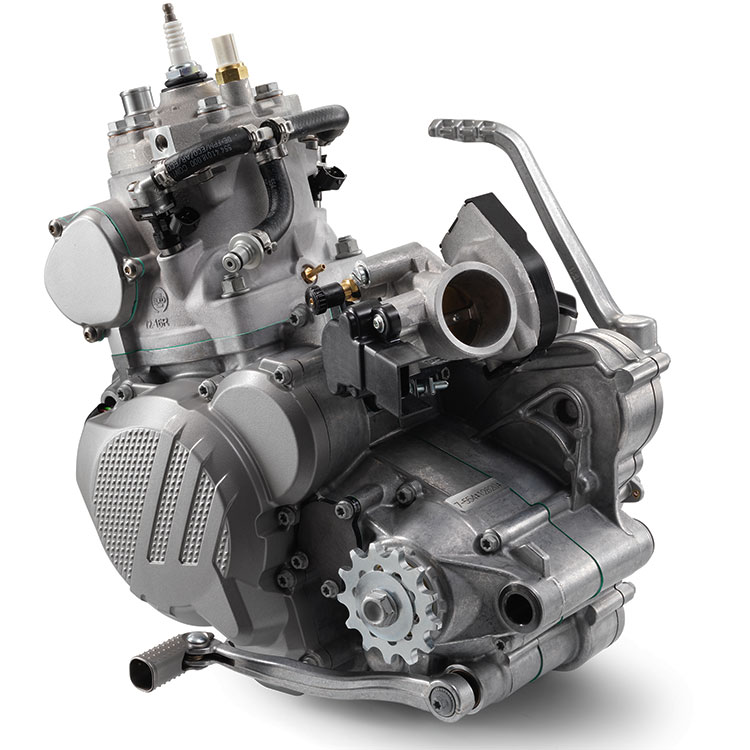 The engine is the same basic 2017 two-stroke platform, counterbalanced with the relocated electric starter and room for the additional power generation through the stator. Gone is a carburetor and in its place is a 39mm Dell’Orto throttle body that does little more than meter air and translate throttle position into digital information. Oil is injected into the throttle body on the engine side of the butterfly valve. The crankcase pressure is measured from the hose running out of the booster port on the rear of the cylinder. The crankcase pressure sensor and also a tip-over sensor are located on the lower portion of the oil tank mounting part. It has a starting circuit that adds more air to allow cold starts with the ECU doing the work a choke would have in the past. The real changes to the engine are within the cylinder which house the injectors along side the transfer ports. The powervalve, cylinder dimensions, compression ratio and likely the port timing will all likely remain the same.
The engine is the same basic 2017 two-stroke platform, counterbalanced with the relocated electric starter and room for the additional power generation through the stator. Gone is a carburetor and in its place is a 39mm Dell’Orto throttle body that does little more than meter air and translate throttle position into digital information. Oil is injected into the throttle body on the engine side of the butterfly valve. The crankcase pressure is measured from the hose running out of the booster port on the rear of the cylinder. The crankcase pressure sensor and also a tip-over sensor are located on the lower portion of the oil tank mounting part. It has a starting circuit that adds more air to allow cold starts with the ECU doing the work a choke would have in the past. The real changes to the engine are within the cylinder which house the injectors along side the transfer ports. The powervalve, cylinder dimensions, compression ratio and likely the port timing will all likely remain the same.

The biggest changes are the adaptation of oil injection and the ECU to control all of this. The switch to oil injection is likely due to getting the most efficient stream of fuel out of the injectors. Having oil (at human mixing ratios which vary with the person) is not the best for consistent performance. It isn’t that injectors can’t handle the oil, it is just much better to have the computer do this properly. We have seen just how successful and efficient this can be on Beta two-strokes already. Then it is up to the ECU to handle the amount of fuel and the timing of delivery based on the information delivered by the sensors. We will detail more on this when we quiz the engineers at the introduction. Let alone the differences in gasoline across the world, these are conditions the system must account for while still being simple and reliable.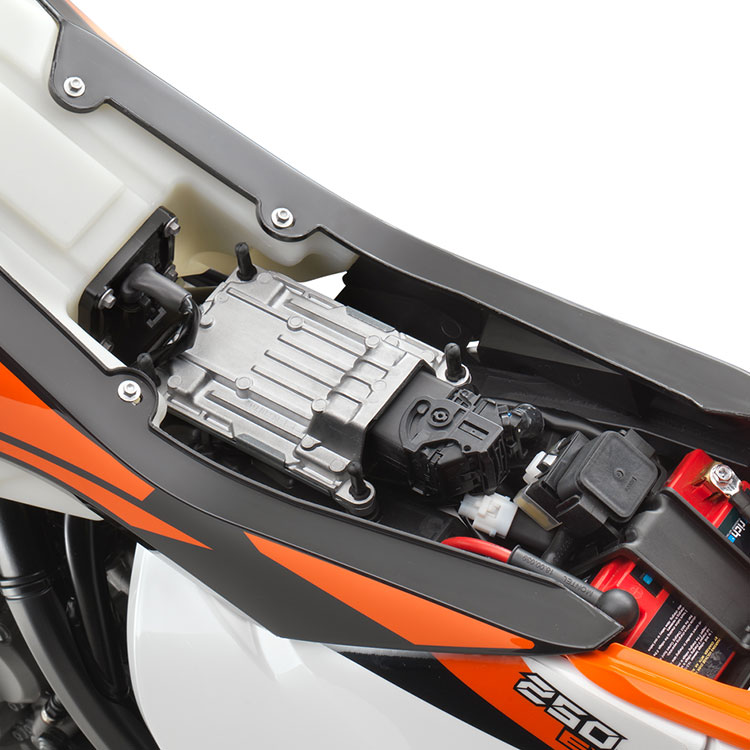
The computer part of the KTM is built by Synerjet, a company owned by Continental who have a lot of experience in engine management electronics. We had speculated that Mikuni was involved in this as they also own a few patents in relation to two-stroke fuel injection, the internet was speculating that KTM’s switch in carburetor manufacturer was a sign. So much so that even the “as delivered bad jetting” was just to make this coming FI bike seem better. Right?!?
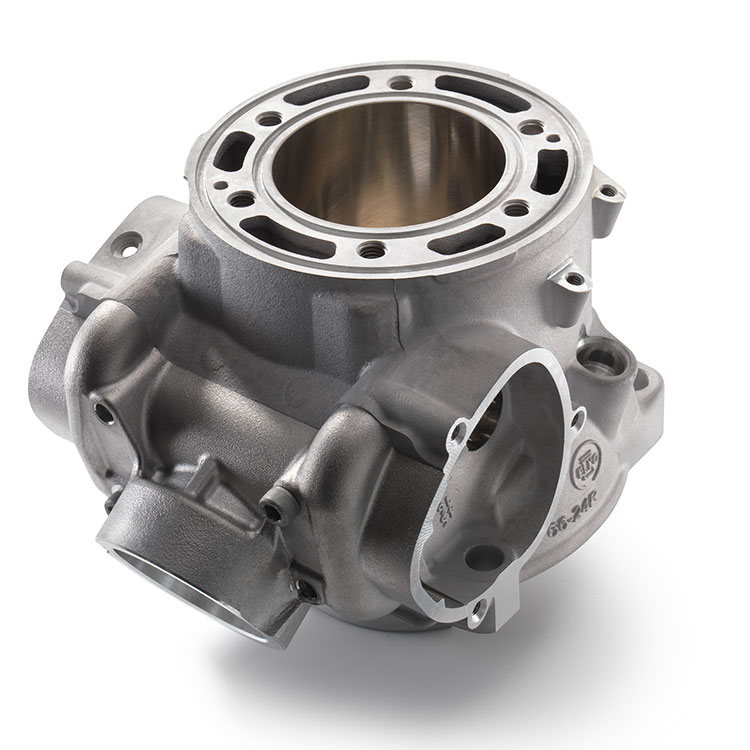
The end goal here is to keep the same level of performance without adding much in the way of complexity. From our experience with FI on four-stroke bikes, even from the first years, this should not be an issue. We expect to learn some of the interesting things KTM went through, dodging patents held by others and the usual unexpected hiccups in bringing any newer technology along. But what we know and expect is that this is the future and most will adapt and love it. For sure without fuel dripping out of vent lines (the biggest loss of fuel) and the excess un-burnt fuel when the carburetor is playing catch up when the setting is rich, this KTM will be much more efficient. It will also be able to be clean when needed and also powerful if needed, all based on making changes to the computer instead of changing jets.
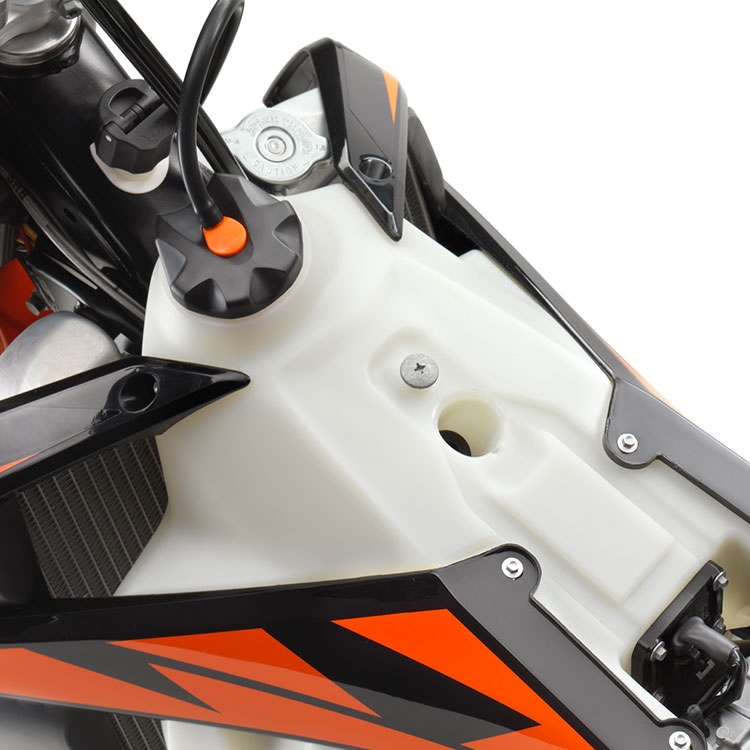 Pouring oil into the frame (where it runs through a tube into a tank located just in front of the shock) is much easier that finding the ratio-rite and wondering if the gas in the can is mixed. And just because you can’t see what is inside the silicone filled case does not mean you will ever have to work on it. There will be an accessory switch to change between ignition map settings as well. The motorcycle community overall isn’t the most embracing of new technology, but other than adapting it to a two-stroke, nothing is really new here. And if you are scared, KTM will have the carbureted bike available for at least another year in the US.
Pouring oil into the frame (where it runs through a tube into a tank located just in front of the shock) is much easier that finding the ratio-rite and wondering if the gas in the can is mixed. And just because you can’t see what is inside the silicone filled case does not mean you will ever have to work on it. There will be an accessory switch to change between ignition map settings as well. The motorcycle community overall isn’t the most embracing of new technology, but other than adapting it to a two-stroke, nothing is really new here. And if you are scared, KTM will have the carbureted bike available for at least another year in the US.
Be aware that KTM is only offering one FI equipped model for 2018, the rest of the smoker line such as the 250SX, 250XC and 300XC, for example, will still be carbureted. The 250 XC-W TPI will be the test bed and maybe KTM will add more FI models to the line for 2019. And the difference between the US spec bike and the world spec bike is the use of Dunlop tires. Otherwise they are identical we are told.
Like usual we’ll have the most informative riding impression up as soon as possible depending on internet connections or how well the carrier pigeons work out for us from Erzburg, Austria on Thursday.
Here is what others said (and a lot of the cut and paste specs too):


One Response to “KTM’s Fuel Injected Two-Stroke–Here it is.”
ETicket55 .
YAY!!! Separate oil tank and injection!!
I know, I know …. mas muy complicado.
But *so* much easier to live with. As fill it up … and go.
Me likey. :^)